NREL Water Power Newsletter Spring 2022
In this issue, learn the newsletter's name, vote for what's next, and catch up on the latest hydropower and marine energy news and opportunities from spring 2022.
This quarterly newsletter highlights the latest from NREL's Water Power Program.
In This Issue
Announcements
Name of Newsletter Officially Selected
You voted, and we listened. We are excited to officially introduce this newsletter under the name you selected: The Current.
Thank you to all who voted!
What Would You Like To Know?
A lot of work is happening in water power. We want to provide you with the content you want. Let us know the topics or projects you would like to know more about. Submit your vote for:
- Lab capabilities
- Accomplishments
- Researchers
- Events
- Or add your own suggestion!
What To Watch
A Window Into the Future of Wave Energy: To protect marine energy devices from harsh ocean environments, many wave energy developers add heavy steel to their designs. But that can add cost and weight to the machines. Nathan Tom and a team of NREL researchers thought outside the steel box. Their design doesn't need a heavy shell to survive the ocean. And it could be cheaper and more productive, too. Called variable geometry, these designs can change shape to let powerful ocean forces slip past or through.
Watch more on NREL's water power video playlist.
Hydropower News
Senate Hearing Examines Opportunities and Challenges for Maintaining and Expanding Existing Hydropower Capacity
Director of Water Power Technologies Office (WPTO) Jennifer Garson provided her expertise at a recent hearing from the Senate Committee on Energy and Natural Resources. The purpose of the hearing was to examine the opportunities and challenges associated with maintaining existing hydropower capacity, expanding hydropower at nonpowered dams, and increasing pumped storage hydropower.
HydroWIRES Initiative Research Roadmap To Address Hydropower Challenges
Through their HydroWIRES Initiative, which stands for Hydropower and Water Innovation for a Resilient Electricity System, WPTO aims to understand, enable, and improve hydropower's contributions to reliability, resilience, and integration in the rapidly evolving U.S. electricity system.
Now, a recently released HydroWIRES Initiative Research Roadmap outlines the initiative's technical objectives and intended outcomes for the next 5 years and beyond. The roadmap includes feedback from researchers across five national labs, including NREL's Greg Stark. To guide the U.S. Department of Energy's (DOE's) hydropower strategy and HydroWIRES research, WPTO and the national labs also incorporated feedback from stakeholders across the hydropower community and relevant sectors. Learn more about other NREL projects that are part of the HydroWIRES Initiative.
Streamlining Hydropower's Regulatory Process
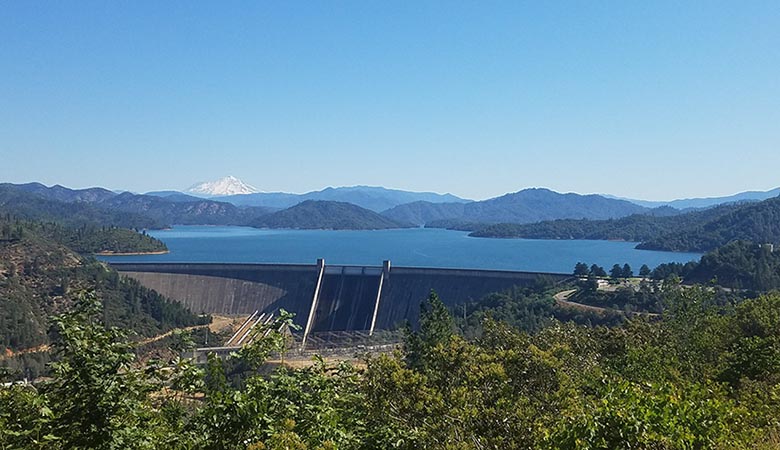
To support the United States' transition to clean energy, hydropower regulations must protect the environment (and more) and enable the growth of clean hydropower. Now, in a new study published in Energy Policy, NREL's Aaron Levine and Taylor Curtis, along with experts from WPTO and Oak Ridge National Laboratory, created a new dataset to track how long it takes for hydropower developers to earn a license or relicense.
The team discovered that new licenses took less overall time than relicenses (with averages of 5 versus 7.6 years, respectively) and greater environmental complexity often results in longer and more costly licensing processes. This comprehensive analysis could help regulators decrease the time and cost for hydropower developers to earn a license to operate while upholding important environmental regulations. Because hydropower's flexible energy is key to a zero-carbon energy future, streamlining the regulatory process could help incentivize investment in this valuable carbon-free energy source. Thanks to NREL Water Power Laboratory Program Manager Al LiVecchi for administering this work.
EDITORIAL: Harnessing Hydropower To Achieve a Sustainable Future
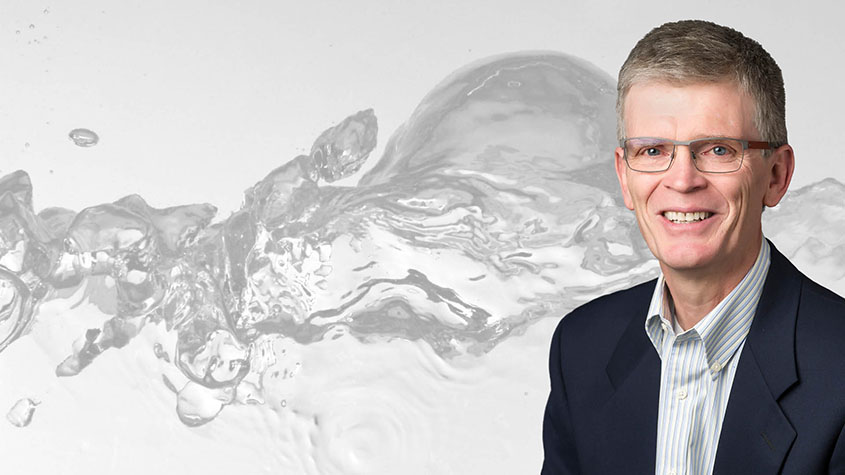
Marine Energy News
NREL Capabilities Help Advance Marine Energy Technologies
Ocean waves are a vast and untapped renewable energy resource the world can harness to meet growing electricity needs. Want to learn more? In a new video showcasing NREL's Flatirons Campus facilities, researchers Andrew Simms, Rebecca Fao, Arielle Cardinal, Scott Lambert, and Ismael Mendoza share how NREL helps prepare wave energy prototypes for commercial success. The video highlights collaborations with Virginia Tech, Centipod Wave Energy, and C-Power. By providing critical research, development, and demonstration capabilities, NREL helps advance marine energy technologies from the lab to the ocean, ultimately accelerating the pace of marine energy technology development.
Award-Winning NREL Simulation Software Helps Roughly 100 Wave Energy Developers Improve Seafaring Technology
Wave energy developers can bring the ocean to the laptop thanks to the Wave Energy Converter SIMulator (WEC-Sim), a tool built by NREL researchers Nathan Tom, Thanh Toan Tran, and David Ogden in collaboration with Sandia National Laboratories. This first-of-its-kind, open-source code allows developers to simulate how much electricity their device could produce and how well it could handle the open ocean. WEC-Sim can forecast outcomes for almost any water-bound machine, providing precise data on how each critical component will function in waves of various heights and forces. To date, roughly 100 wave energy researchers and developers have published papers crediting the tool for helping them analyze and fine-tune their machines.
NREL Successfully Deploys Wave-Powered Desalination Device To Prepare for Waves to Water Prize DRINK Finale
NREL's first marine-powered desalination device recently weathered real ocean waters! With help from the Coastal Studies Institute, NREL researchers, Scott Jenne, Ben McGilton, Aryana Nakhai, Mark Murphy, Andrew Simms, and Casey Nichols deployed a wave-powered desalination test device and anchored it to the nearby seabed at Jennette's Pier—the same location where Waves to Water Prize finalists will launch their wave-powered desalination prototypes this April. NREL's hydraulic and electric reverse osmosis wave energy converter gave the crew a chance to deploy and retrieve a wave-energy-powered device, which is exactly what they'll do with competitors' prototypes during the DRINK Finale. Dive in with the new device!
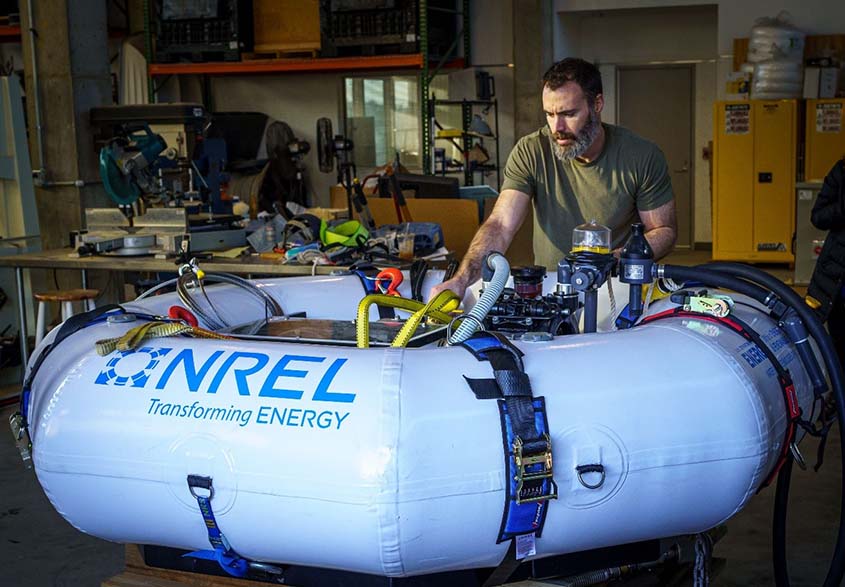
EDITORIAL: Marine Energy Team Inspired by the Potential of Marine Energy
NREL's Water Power R&D Group Manager Mike Lawson and the entire Marine Energy team are working to harness the collective creativity and capabilities at NREL to make marine energy a viable and productive renewable energy source. The marine energy team has grown to over 40 researchers focused on transforming the U.S. energy systems for the benefit of communities across the nation and the world. Read more about Lawson's vision for the future of NREL's marine energy program.
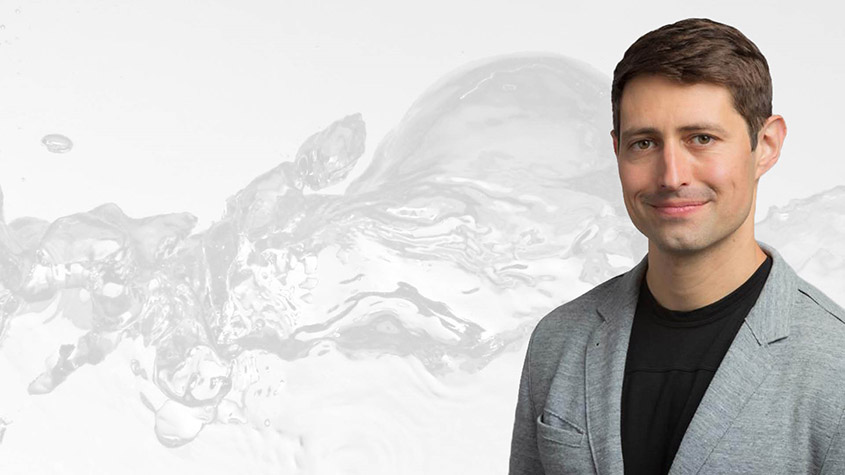
Prizes and Competitions
What's Your Vision?

To break down barriers between DOE and historically underrepresented communities, the Inclusive Energy Innovation Prize recently launched the What's Your Vision? campaign. The $2.5 million competition will fund up to 10 organizations or groups for activities related to climate and clean energy that support, build trust, and strengthen relationships and partnerships with disadvantaged communities. The Inclusive Energy Innovation Prize is administered by an NREL team that includes Jenny Wiegele and Amanda Morton through the American-Made Challenges program and funded by eight offices within DOE's Office of Energy Efficiency and Renewable Energy. Watch the campaign kick-off video and learn how you can share your vision for a just and equitable clean energy future.
Two Teams Named Grand-Prize Winners in Water Resource Recovery Prize
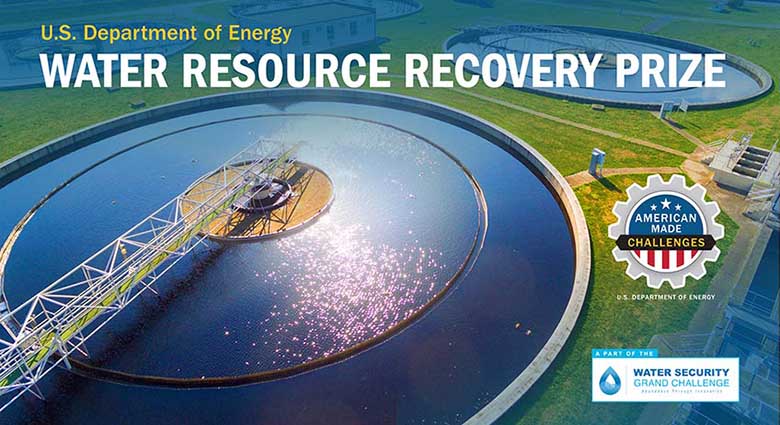
DOE has announced two grand-prize winners of the Water Resource Recovery Prize, a $1 million, two-phase competition that helps fast-track cutting-edge water treatment solutions. The prize challenged innovators to double resource recovery at municipal water treatment facilities, helping them extract enough water, energy, and nutrients from wastewater to reduce the overall cost of treatment. The grand-prize winners each earned $250,000 for their novel, systemwide solutions, which could help smaller water treatment plants recover resource riches. The prize is overseen by Advanced Manufacturing Program Lab Program Manager Matt Ringer and administered by NREL prize administrator Emily Evans through DOE's American-Made Challenges program.
Inaugural Hydropower Collegiate Competition Aims To Renew Aging Workforce
For over a century, hydropower has been the nation's largest source of renewable energy. Yet many young professionals are unaware of the opportunities to innovate—and find
careers in—the evolving hydropower industry.
To pave the way for next-generation workers to start their careers in clean energy,
WPTO and NREL are launching the inaugural 2023 Hydropower Collegiate Competition. Partnered with the Hydropower Foundation, the first competition calls on interdisciplinary
teams of undergraduate and graduate students from a variety of academic programs to
offer unique solutions to complex hydropower challenges. Applications will open on
April 4, 2022. Help NREL revitalize the hydropower industry!
NREL Water Power Profile: Beneath the Surface
This feature highlights some of the amazing people beneath the surface of NREL's water power news, tools, and events. Interested in more water power profiles? Check out NREL's water power Women's History Month article series, where we showcase a handful of NREL's outstanding women researchers in water power.
From Priceless Art to Disintegrating Coastlines, Sherry Stout Is Building Resiliency One Community at a Time
Sherry Stout had just gotten off the phone with the architect of the United States Capitol building in Washington, D.C. The architect, she was quick to clarify, is not a person; it's the federal agency responsible for preserving the historic buildings, art, monuments, and grounds of the Capitol campus.
"If the Capitol building loses air conditioning," Stout said, "within a very short time incredible amounts of humidity in the predominantly marble buildings starts to threaten irreplaceable art." So, the architect called Stout.
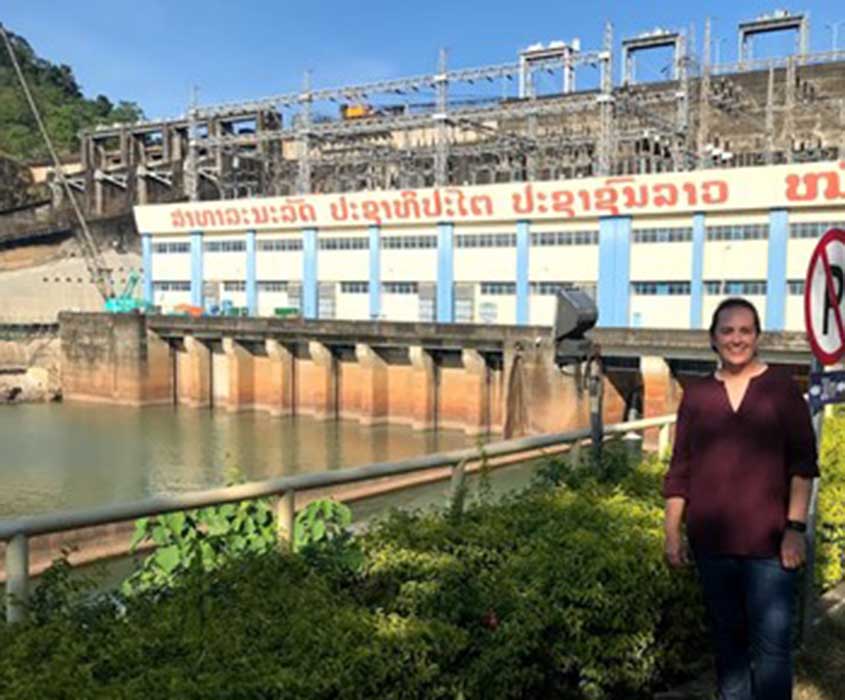
Stout is not a typical engineer. "Bridge was in my job description," she said. As a member of NREL's Cold Climate Housing Research Center, Stout specializes in addressing energy challenges in rural, remote, tribal, and developing communities (and, on occasion, D.C.). That means consulting with the architect of the Capitol to insulate its archives from increasingly hot, sweaty summers but also with remote villages where water power can ease the transition to renewable energy, and rural coastal communities in Alaska where hurricanes slam sea ice, melted into pancake-like pieces, against thawing shorelines over and over and over. In short, Stout consults on how everything from one-of-a-kind art to the villages people call home can survive a changing climate.
"We work with villages whose homes are literally falling into the Bering Strait because they're losing coastline so rapidly," said Stout. "When communities say, 'We want to be resilient,' we go and figure out: What are they trying to be resilient to? What are their main risks? And we help them address that."
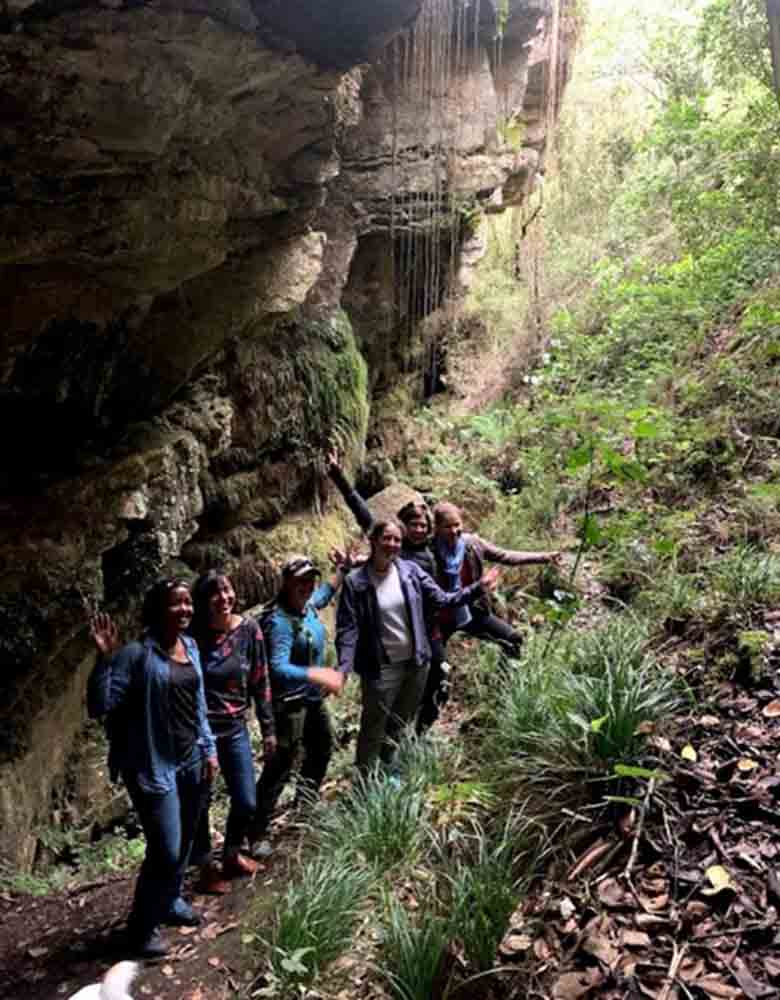
Climate change wreaks different kinds of havoc on different communities. In many southern states, rising sea levels are causing dry day flooding—floods without rain. In drought-prone areas of rural New Mexico, where Stout grew up, dry air accumulates static, which can spark a fire. To avoid that, utilities might shut off power, putting people who depend on electronic medical equipment—like oxygen machines—at extreme risk.
"How do you maintain power in that?" Stout said. "How do you maintain power, water, and wastewater after a hurricane?" Stout has the answers. And communities call her often, sometimes on her personal cell phone number, which she gives out as freely as her time.
Now, as she works towards her doctorate in behavioral science, Stout is accumulating answers to questions that could impact how individual communities—but also the entire world— respond to climate change. "There's been no country on the planet who's met their decarbonization goals," she said. "We could have the coolest technology, and it could solve some of these decarbonization issues. But in over a decade, no country has actually gotten there. It says we're missing something."
"If you can't get people to change their behavior," Stout said, "it doesn't really matter."
Read more about her work and the importance of coordinated, diverse stakeholder groups in energy planning.
Events and Opportunities
Catch up on all upcoming events or explore the following featured events:
Join NREL at DOE's Water Prize Opening Ceremony and other DRINK Finale events: March 30–April 12, 2022. Waves to Water Prize finalists will test their marine energy-powered desalination devices in the shallow waters surrounding Jennette's Pier for a chance to win part of the $1 million cash prize pool. Learn more about the Waves to Water Prize and follow along with the DRINK Finale.
WPTO representatives will be present at Water Power Week (April 5–7, 2022) in Washington, D.C. Stop by their table!
On April 13, 2022, at 1 p.m. ET, join WPTO, NREL, and Hydropower Foundation at the 2023 Hydropower Collegiate Competition informational webinar to learn how to participate in the inaugural competition.
With WPTO, NREL will host the third Marine Energy Collegiate Competition informational webinar on April 20, 2022. Learn how to join the 2023 cohort of competitors.
Learn how DOE's Testing Expertise and Access for Marine Energy Research can help support marine energy research and development at an R&D Deep Dive Webinar on April 27, 2022.
NREL In the News
10 Significant Water Power Accomplishments from 2021, CleanTechnica (Jan. 18, 2022)
A Window Into The Future of Wave Energy, CleanTechnica (Feb. 18, 2022)
NREL Continues To Explore Marine Wave Energy, PV Magazine (Feb. 16, 2022)
Wave Energy Technology Takes a Step Forward, Splash 247 (Feb. 18, 2022)
Wave Energy Nails Spot Among 68 New Projects Getting $175 Million Love Tap From ARPA-E, CleanTechnica (Feb. 28, 2022)
ECU Notes: Researchers Deploy Test Device for Waves to Water Competition, Reflector (Mar. 6, 2022)
Wave-Powered Desalination Device Sets Sail, CleanTechnica (Mar.16, 2022)
Publications
See all the latest publications or explore the following featured publications:
NREL Programs Channel Students Toward the Future Water Power Workforce, NREL Fact Sheet (2022)
Water power is a flourishing part of the renewable energy industry. But realizing
the potential of water power technologies requires new talent and continued innovation.
NREL's STEM and workforce development programs are working to raise student awareness
of the exciting career opportunities in water power.
Prizes Power NREL Water Power Innovation, NREL Fact Sheet (2022)
NREL administers several prizes designed to encourage and support innovation that
can help the water power industry grow and improve. Funded by the WPTO, these competitions
tap into a diverse community of contributors who leverage prize money to craft and
build solutions for targeted challenges.
Hydropower
The Role of Hydropower in the Next-Generation Grid, NREL Fact Sheet (2022)
Hydropower can provide a low-carbon source of energy, capacity, and flexibility to
the grid. This fact sheet covers the grid integration aspects of NREL's hydropower
research, including hydropower's role in grid planning, operations modeling, and reliability
and resilience.
NREL Helps Hydropower Projects Navigate Complex Regulatory Currents, NREL Fact Sheet (2022)
NREL researchers are helping industry member license and construct new projects, and
relicense existing projects, by providing expert analyses of regulatory processes
to assist decision makers in identifying areas in need of reform.
Marine Energy
Verdant Power: Thermoplastic Blade Validation at Full Scale, NREL Fact Sheet (2022)
With funding from the WPTO, NREL researchers constructed and deployed thermoplastic
composite blades on a tidal turbine in New York City's East River. Now, for the first
time in history, thermoplastic composite blades have been validated on a large-scale
tidal power turbine.
NREL Data, Modeling, and Tools Empower Marine Energy Analysis, NREL Fact Sheet (2022)
NREL performs research and development and economic analyses to drive and empower
the development of wave energy and tidal, ocean, and river current energy technologies.
These technologies deliver renewable electricity to the grid and provide energy solutions
that support the evolving blue economy.
Want More?
Subscribe to get the next water power newsletter in your inbox. For the latest from WPTO, sign up for those water power newsletters.
Share

